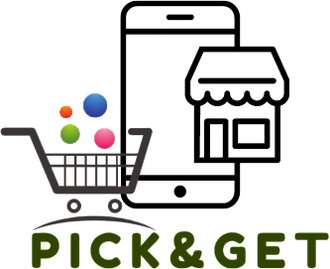
How to Tell If a Product Is Truly Imported from Europe
Walk down a grocery aisle, and you’ll spot countless items labeled “European-style” or “inspired by Italy.” But here’s the truth - not everything with a European-sounding name is actually imported from Europe. For customers who value real quality, learning to tell authentic European groceries apart from imitations makes all the difference.
If you’ve ever wondered whether your olive oil, chocolate, or pasta really comes from Europe, this guide will show you how to recognize the real thing - so you can shop confidently and taste the difference.
Why Authentic Imports Matter
When a product is truly imported from Europe, it brings more than just flavor - it brings heritage. Europe’s food traditions are rooted in craftsmanship, local ingredients, and strict quality standards. From Italian tomato growers to French chocolatiers, these producers follow time-tested methods that preserve both taste and authenticity.
Here’s why authenticity matters:
-
Better taste: Real European products are made using high-quality ingredients, grown and produced under strict regulations.
-
Fewer additives: European food laws limit artificial preservatives, colorings, and flavorings.
-
Cultural connection: Authentic imports carry centuries of culinary tradition.
Buying genuine imports means you’re experiencing food exactly as it was meant to be enjoyed.
1. Check the Country of Origin Label
The easiest and most reliable way to tell if a product is truly European is to check where it was made.
Look for labels like “Product of Italy”, “Made in France”, or “Imported from Spain.” These phrases indicate the product was produced and packaged in that country - not just “inspired by” it.
Be cautious with terms like European-style, Mediterranean recipe, or Italian-inspired. These often describe American-made items that imitate European flavors but don’t meet the same standards.
Tip: On genuine imports, the country of origin is usually printed near the barcode or ingredient list.
2. Look for European Quality Certifications
Europe has one of the most transparent food certification systems in the world. Certain symbols and labels guarantee that a product was made according to traditional methods and in specific regions.
Here are three you should know:
-
PDO (Protected Designation of Origin)
Ensures every part of production - from ingredients to packaging - occurs in a specific European area.
Example: Olive oil or cheese from a specific region in Italy or Greece. -
PGI (Protected Geographical Indication)
At least one stage of production happens in that area.
Example: A cured ham or vinegar produced following regional techniques. -
TSG (Traditional Specialty Guaranteed)
Recognizes products made with traditional recipes or methods, even if produced outside the original region.
If you see these seals on packaging, you’re holding a verified European import - not a copy.
3. Examine the Ingredient List
Authentic European groceries often have shorter, simpler ingredient lists. You’ll recognize every component - olive oil, wheat flour, sugar, salt - without a long list of artificial additives.
Look for:
-
Natural ingredients (no corn syrup or synthetic flavorings)
-
Real sugar instead of artificial sweeteners
-
Olive oil or butter as fats, not palm or vegetable oil
The simplicity is intentional. European producers focus on quality, not quantity, because they believe good ingredients shouldn’t need disguising.
4. Spot Packaging Clues
The packaging of an authentic import often gives away its origin. Here are some subtle details to watch for:
-
Metric units: Grams, liters, and milliliters are standard in Europe.
-
Multilingual labels: You may see instructions in English and another European language.
-
Importer information: Authentic imports must list an importer or distributor within the U.S.
-
EU recycling logos or certification symbols: Genuine European packaging often includes small EU marks for recycling or safety compliance.
Even the packaging style can feel different - simpler, more refined, and often designed with heritage in mind.
5. Avoid Misleading Marketing Terms
Some brands use clever language to sound European without being so. Terms like crafted in the European tradition or Mediterranean-inspired may evoke European imagery but don’t guarantee authenticity.
When in doubt, rely on origin labeling and certifications, not just branding. Real European imports will always disclose where they’re made.
6. Choose Trusted Importers
Authentic groceries aren’t just about what’s written on the label - it’s also about where you buy them.
Reputable importers source directly from European producers who uphold traditional standards and quality assurance.
At Pick & Get, every product we offer is carefully selected for its authenticity and taste. We partner with trusted brands and importers across Europe, ensuring that when you shop with us, you’re getting the real experience - not an imitation.
From olive oils and vinegars to cookies, chocolates, and sauces, every item reflects Europe’s true culinary heritage, delivered straight to your home in the United States.
Conclusion: Authentic Taste Begins with Authentic Origins
Knowing how to identify genuine European imports transforms the way you shop - and the way you eat.
It’s not about labels or trends; it’s about preserving the integrity of real food, made by real people who care about quality.
Next time you’re browsing groceries, take a moment to check the label, look for certifications, and choose authenticity. With Pick & Get, you can trust that every product comes with the unmistakable taste of true European craftsmanship.







